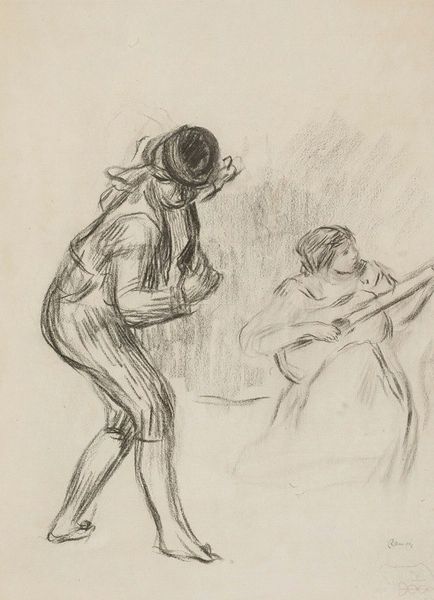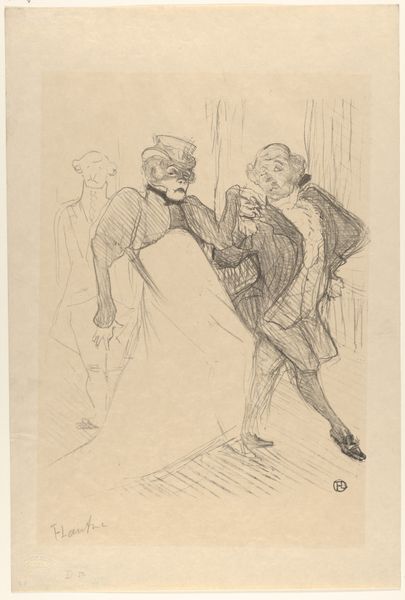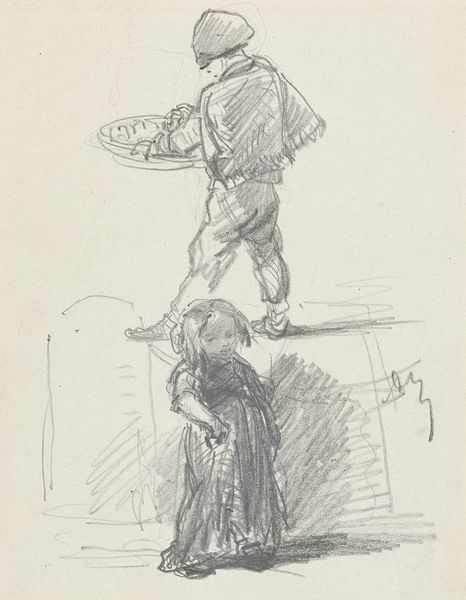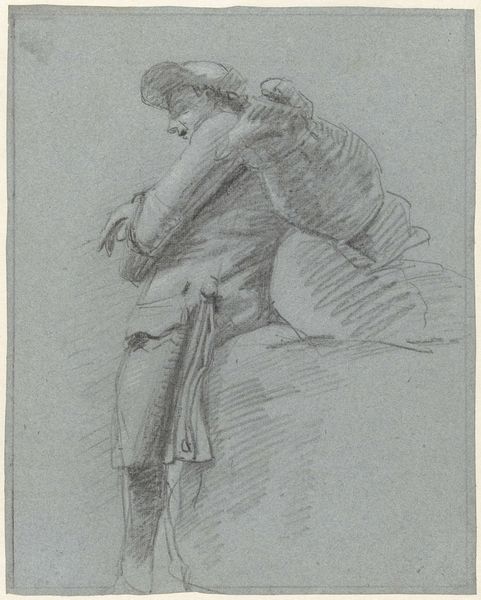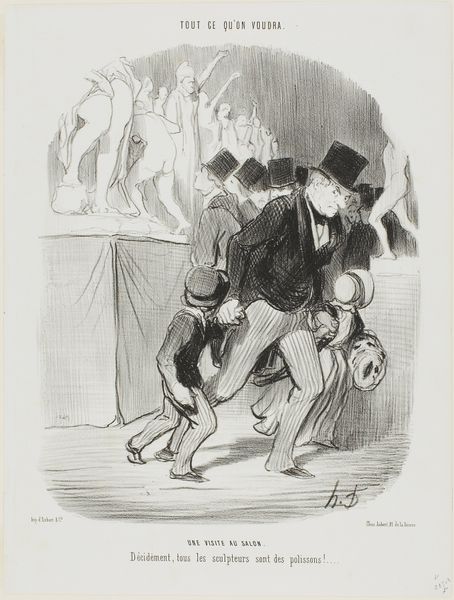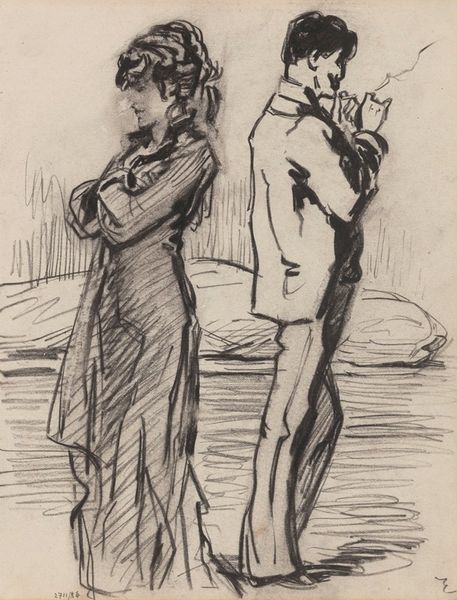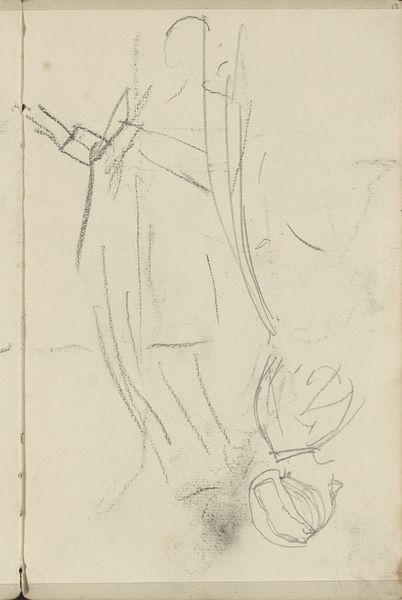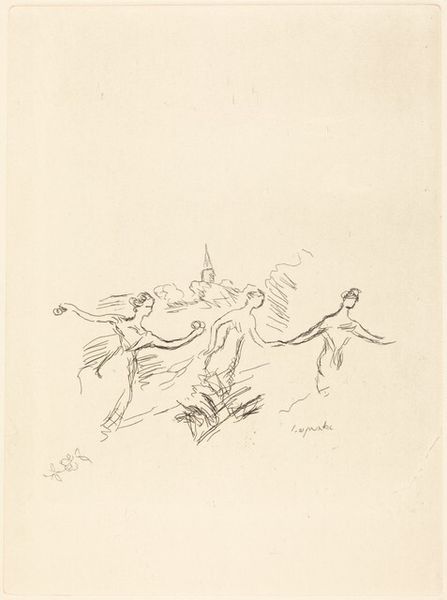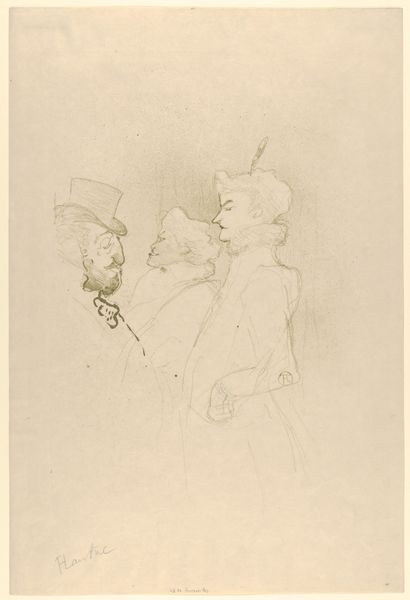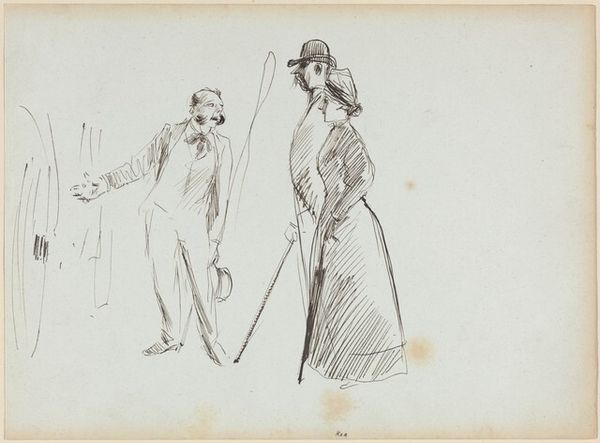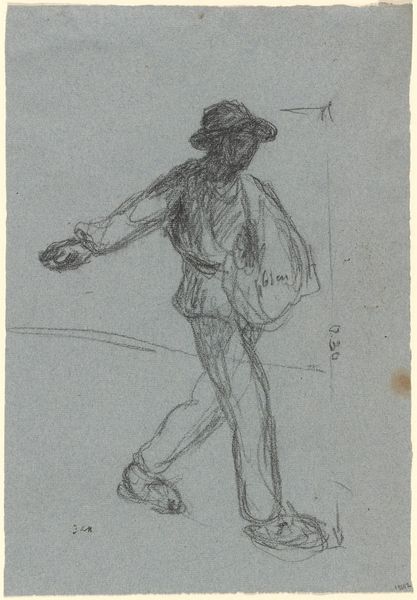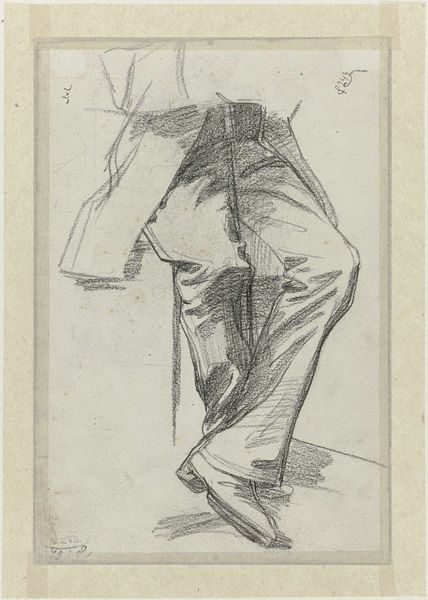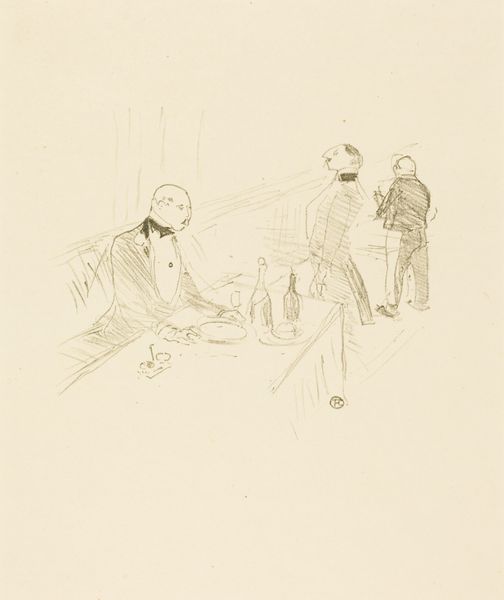
Copyright: Public Domain: Artvee
Editor: So here we have "Réjane et Galipaux, dans Madame Sans-Gêne," a drawing by Henri de Toulouse-Lautrec from 1894. It seems like a snapshot of a stage performance, quite delicate in its rendering. What do you see in this piece? Curator: Immediately, I'm drawn to the labor embedded in the quick sketch – the speed and economy of line reflecting the urgency of capturing a fleeting moment. This isn't just portraiture; it's a document of production. Lautrec is capturing actors enacting a social performance of status, using inexpensive drawing material to depict an opera meant for mass consumption. Consider the setting: Montmartre, at the cusp of immense cultural shift and class mixing in France. Editor: Interesting! It also reminds me of some theatrical caricatures; they certainly appear to be types. Curator: Precisely. It invites us to consider the socio-economic conditions enabling mass spectacle. The performers’ craft is being filtered through Lautrec's own, then circulated in prints and reproductions – democratizing art through its mechanical reproducibility. Editor: How interesting! The flatness almost denies any real space. Curator: Indeed. The materials—the cheap paper and charcoal—become central to our understanding. It asks us to think critically about the production of artistic value, challenging the traditional hierarchy separating “high art” from commercial illustration. Editor: So, Lautrec uses this "low" material, this humble process to depict this very vibrant, bustling, "low" subject, kind of making all levels equal, perhaps? Curator: Exactly! We see art not as divorced from, but rather deeply intertwined with, the economic and material realities of its time. Consider, where might one view such an image? For whom was it made and how might it be distributed and consumed? What, for you, does the medium of drawing lend this depiction? Editor: Wow, I’ll definitely consider drawings and prints as being part of a larger socio-economic network. Thanks for enlightening me! Curator: My pleasure. Always ask how the means of production affect the message, and what hands shaped the material object before you.
Comments
No comments
Be the first to comment and join the conversation on the ultimate creative platform.
